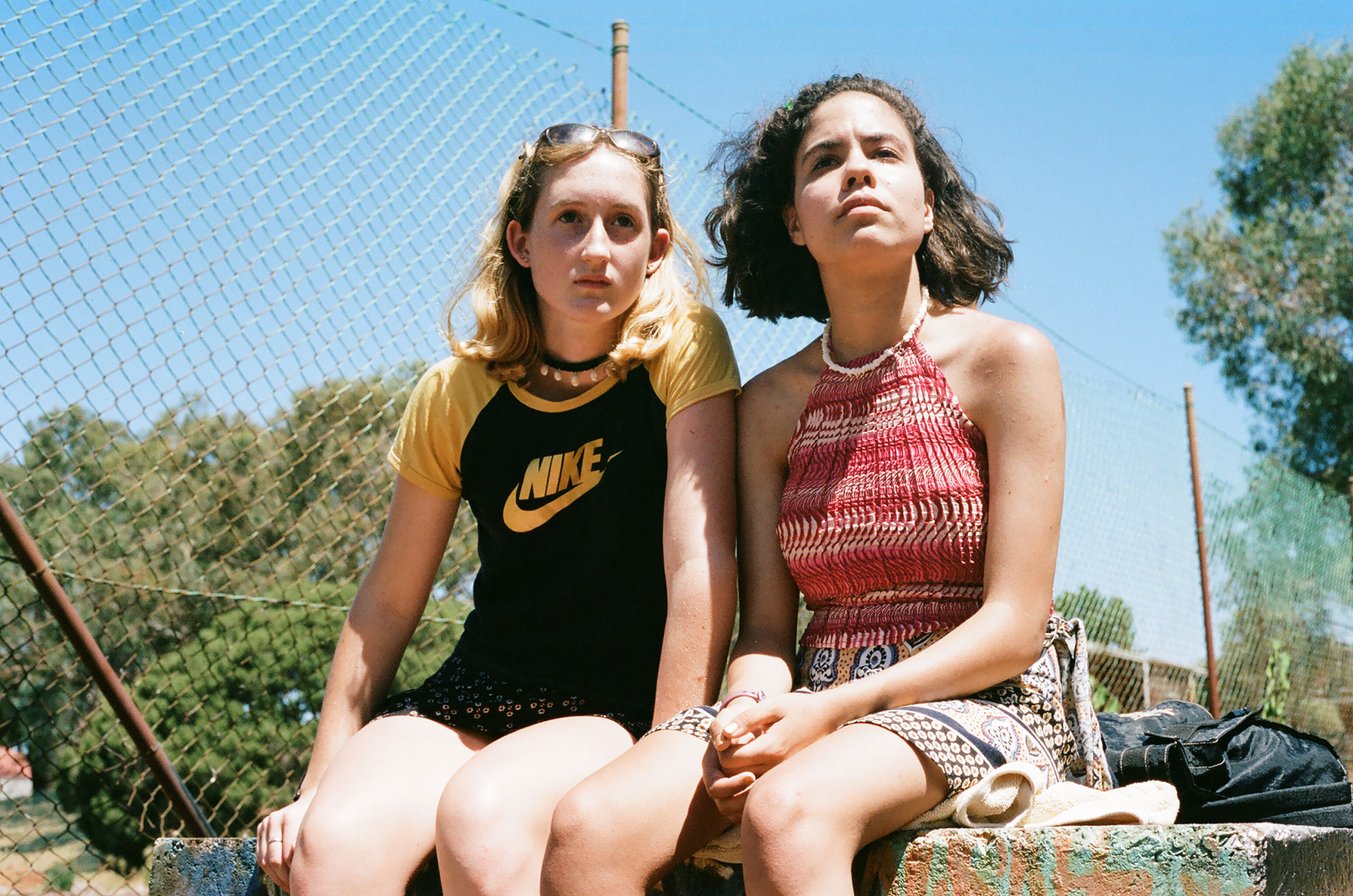‘It’s in the suburbs that a majority of life is lived’, writes David Whish-Wilson in Perth, his idiosyncratic 2013 account of the West Australian capital, ‘albeit largely without performance, without witness and mostly without record.’[1]David Whish-Wilson, Perth, University of New South Wales Press, Sydney, 2013, pp. 174–5. The statement holds true so long as it can be assumed to exclude Australian art, which has seen no shortage of works that perform, witness or record lives lived in the burbs. The same goes for film too, of course. Second perhaps only to the bush, and for better or for worse, suburbia has provided the backdrop to some of the most well-trodden tropes of this country’s cinema.
Because suburbs are by their very nature unremarkable, they tend to be used in films as flexible and generalised settings that could signify any other of their kind. The fictitious suburb of Golden Grove serves this purpose in the black comedy Suburban Mayhem (Paul Goldman, 2006),[2]The film was shot on location in Newcastle, but only because it was cheaper than shooting it in Sydney. As producer Leah Churchill-Brown suggests, ‘It could have been filmed anywhere – it could have been Wollongong, it could have been Adelaide.’ Churchill-Brown, quoted in Angela Cuming & Paul Scott, ‘Murder, Mayhem and a Movie with a Chillingly Familiar Plot’, The Sun-Herald, 2 October 2005, p. 35. while the stark and alienating outer suburbia of Floating Life (Clara Law, 1996) is immediately recognisable despite its location never being made specific. Even when a film alludes to or is explicitly set within an actual suburb, a like substitute will usually do the job. Smithfield Plains stands in for Salisbury North in Snowtown (Justin Kurzel, 2011); a house in Strathmore becomes the Kerrigans’ Coolaroo home in The Castle (Rob Sitch, 1997). Close is close enough.
Tim Barretto’s self-funded 16mm feature Bassendream (2022) is something of a rarity, being a film that takes an actual suburb as nothing less than its central subject. Set and filmed almost exclusively within Bassendean, the suburb of Perth where Barretto grew up,[3]Bassendean is the name of both a suburb and a local government area (the Town of Bassendean, which encompasses the suburbs of Bassendean, Ashfield and Eden Hill). All of the filming took place within the boundaries of the latter, with the overwhelming majority taking place within the suburb itself. A comparable Australian film is Kriv Stenders’ Blacktown (2005) – also a self-funded micro-budget film, albeit shot digitally – which was set and filmed entirely in and around the Western Sydney suburb of the same name. and made possible through the input and support of his home-town community, Bassendream’s ties to its location are unusually strong. It still presents a vision of suburbia that is effortlessly relatable, as is customary for Australian films; but it does so at the same time as it vividly depicts a specific place, one that exists nowhere else. Although Bassendream – like many a dream – could conceivably be set elsewhere, its fidelity to its setting makes it hard to imagine them ever separated.
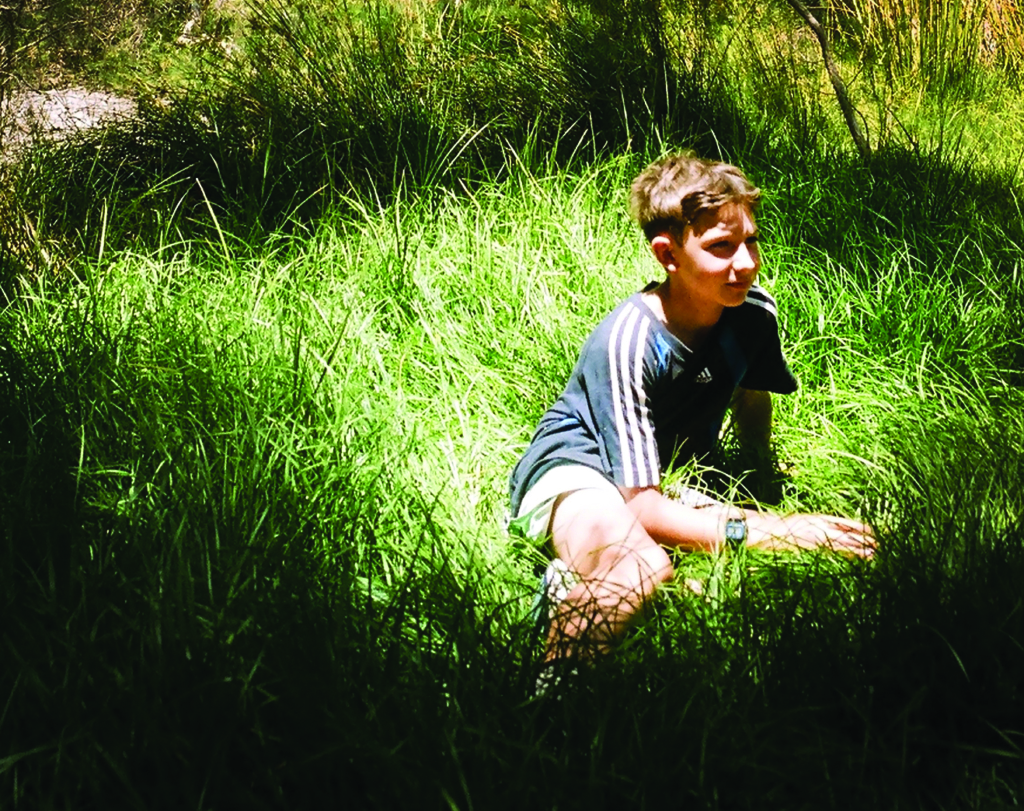
Bassendean (or ‘Basso’, as it is both affectionately and derisively known[4]The nickname has been adopted by everything from the eponymous pub (The Bassendean Hotel, aka ‘The Basso’) to a local church (Bassendean Church of Christ, now officially known as Basso Church).) is one of Perth’s oldest suburbs, and an area with working-class roots.[5]This reputation stems mainly from the various blue-collar industries that were once based in the area and Bassendean’s proximity to the (now-defunct) government railway workshops in the nearby suburb of Midland. See Carol Leigh, ‘Bassendean: A Rich and Varied Heritage’, Early Days: Journal of the Royal Western Australian Historical Society, vol. 13, part 3, January 2009, p. 341. For a broad historical overview of the suburb, including its significance for Whadjuk Noongar people, see Jennie Carter, ‘Bassendean: A Brief History’, Town of Bassendean, May 2020, available at <https://library.bassendean.wa.gov.au/Profiles/library/Assets/ClientData/Bassendean_brief_history_small_file.pdf>, accessed 5 September 2022. It is divided by a train line into two distinct halves: the south-eastern side hugs a lengthy stretch of the Derbarl Yerrigan (Swan River), and is by far the more scenic; while the north-western side is mostly a nondescript residential area. Though it lies only 11 kilometres north-east of the city centre, Bassendean is often likened to a country town on account of its relative lack of gentrification, as well as its various historical landmarks, heritage sites and nature reserves. Depending on where you’re standing, it can look like a quaint place with a distinctive character, or a somewhat scruffy suburb that resembles countless others. Its claims to fame are few either way. My guess is that few outside Perth would know of it as anything other than the birthplace of disgraced former entertainer Rolf Harris, the so-called ‘boy from Bassendean’.[6]Harris was the suburb’s golden child for many decades, but became a source of shame upon his conviction in 2014 on twelve counts of indecent assault against underage girls. See Brendan Foster, ‘Rolf Harris’s Home Town Removes All Signs of Former Favourite Son’, The Guardian, 4 July 2014, <https://www.theguardian.com/uk-news/2014/jul/03/rolf-harris-hometown-removes-signs>, accessed 25 October 2022.
Bassendream doesn’t present a story so much as a series of loosely interconnecting vignettes, all of which unfold over a summer’s day sometime in the mid 1990s.[7]The film’s press kit suggests that the narrative takes place on ‘the last day of the summer school holidays’, though this isn’t made explicit in the film itself. See Hope St Productions, Bassendream press kit, 2022, p. 3. Its large cast of characters can be split roughly in half into adults and children. There’s Fran (Renée Newman), a housewife whose existence seems to revolve entirely around the laundry; Anne (Georgia Wilkinson-Derums), a scatty young mother-to-be; Ryan (Jeremy Bunny), a slacker type who drifts between backyard gatherings; and Frank (Jack Miolin), a ball of negative energy who has found himself living in ‘a crappy house on the wrong side of the bloody train line’ following a recent divorce. The numerous children include – but are far from limited to – two sets of pre-teen boys who share in common a love for mischief and adventure; Tess (Neve Havercroft), a girl of around the same age who regularly wanders around the suburb, presumably to avoid being at home where her father remains housebound; and Sally (Yasmine Caldwell) and Lauren (Cezera Critti-Schnaars), two teenage buddies who seem inseparable until the latter moves away from Bassendean to live in a country town.
Bassendream has been described as a ‘multi-character study of suburban malaise’,[8]Dov Kornits, ‘Tim Barretto’s Perfection with Bassendream’, FilmInk, updated 12 October 2022, <https://www.filmink.com.au/tim-barrettos-perfection-with-bassendream/>, accessed 25 October 2022. and several of the characters indeed read like the ingredients of a rather dreary melodrama. But the film is in fact overwhelmingly lighthearted, and mostly functions as a comedy.[9]The generally upbeat vibe of the film is reflected by its soundtrack, which comprises Aussie rock numbers such as The Triffids’ ‘Save What You Can’, Paul Kelly and the Coloured Girls’ ‘Dumb Things’ and Jebediah’s ‘Leaving Home’. This is because it’s the children and not the adults who make up the film’s backbone, and it’s their energy and optimism that dictate its tone and rhythms[10]‘I really wanted to keep the kids and the parents in separate worlds’, Barretto explains. ‘I wanted the kids[’] world to have a heightened sense of reality and then the parents’ world based in reality.’ Tim Barretto, quoted in Matthew Eeles, ‘Interview: Tim Barretto’, Cinema Australia, 29 June 2022, <https://cinemaaustralia.com.au/2022/06/29/interview-tim-barretto/>, accessed 5 September 2022. (the film’s riverside locations, as well as its occasional camera movements, are reserved almost exclusively for scenes featuring kids). Even when the adults and their adult problems are the focus, the film takes pains to offset any vestiges of seriousness. Fran, for example, is paired up with Paul (Kingsley Judd), a comical dropkick of a husband whose on-screen presence softens what is otherwise a pretty depressing marriage. Frank finds temporary relief from his post-marital stress when he takes to his yard with a lawnmower snuck away from his ex-wife’s house – a sequence that ends with a bust sprinkler and more stress still.
Many of the characters turn out to be directly or indirectly connected, and their interconnections are revealed gradually over the film’s seventy-nine-minute duration. Given the large number of characters and that their names are barely mentioned – that is, if they’re mentioned at all – it can be tricky keeping tabs on who is connected and how, sometimes to the point of distraction. Ryan turns out to be the absent father of Anne’s unborn child, but the pair are never shown together, and their respective scenes are conveyed in such different tones that it takes some time for their relationship to become obvious. Elsewhere, a seemingly offhand remark might offer the only clue that links two characters until they surprise you by popping up in a scene together – and many such revelations arrive so late that they come across as more curious than anything else.
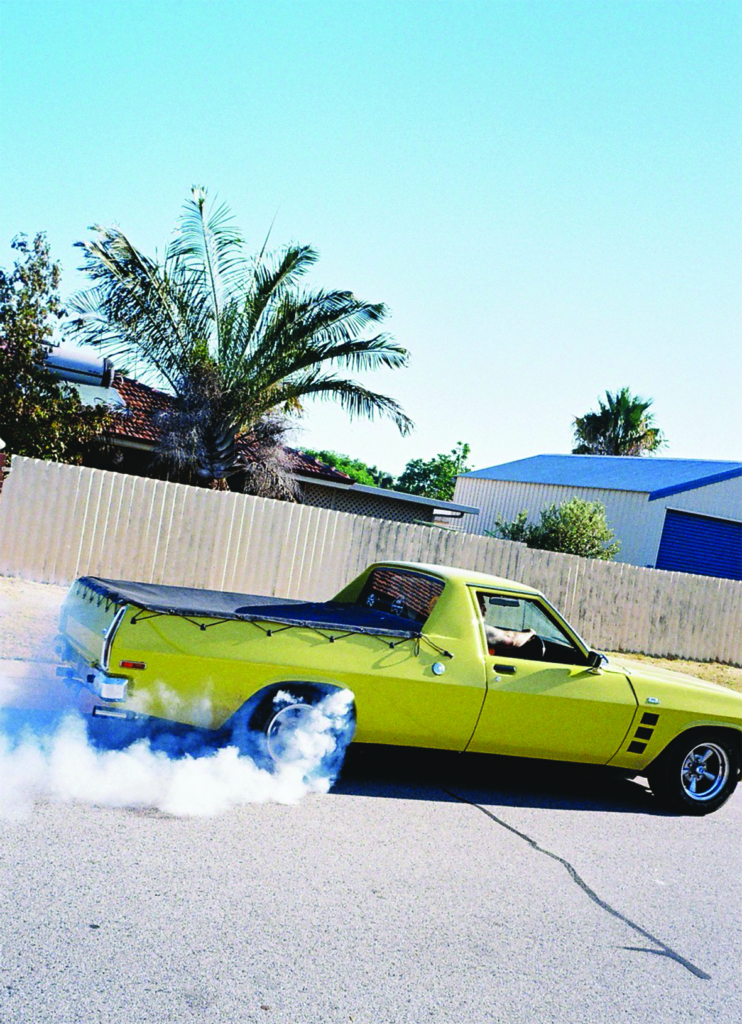
With its myriad interconnecting characters and mosaic-like structure, Bassendream somewhat resembles the cinema of Robert Altman – and of his numerous progeny, such as Paul Thomas Anderson, whose film Magnolia (1999) Barretto cites as an inspiration[11]See Eeles, ibid.; and Andrew F Peirce, ‘Bassendream Director Tim Barretto Captured 90s WA Suburbia on Film and Talks at Length About Its World Debut at Revelation Film Festival in This Interview’, The Curb, 4 July 2022, <https://www.thecurb.com.au/bassendream-director-tim-barretto-captured-90s-wa-suburbia-on-film-and-talks-at-length-about-its-world-debut-at-revelation-film-festival-in-this-interview/>, accessed 5 September 2022. – but is far more modest than this comparison might suggest. Unlike the sweeping and intricate narrative overlaps in Altman’s films, most of the connections in Bassendream turn out to be fleeting and superficial – a brushing of shoulders at most, much less a crossing of paths. An early sequence involving a stray football acts as something of a model for what’s to come: Paul trips over the ball in his yard, picks it up and then kicks it out onto the street, causing a car to skid to a halt off screen; cut to Frank, who boots the ball in the opposite direction, then shouts angrily at the unseen culprit before driving away.[12]The football is seen again towards the end of the film, wedged in a rooftop TV aerial; after it is dislodged and bounces down onto the street, another car is heard slamming on its brakes.
With its myriad interconnecting characters and mosaic-like structure, Bassendream somewhat resembles the cinema of Robert Altman – but is far more modest than this comparison might suggest.
Most of the connections occur on this sort of basis, and are simply a means of passing the narrative baton from one character to the next, while others are established purely on a formal level, and are byproducts of the film transitioning from one area of Bassendean to another. In one scene, Fran literally pisses herself in the driver’s seat of the car after rushing to a park toilet and finding it locked. An exaggerated sound of running water is introduced on the soundtrack, which Barretto then uses to hopscotch across the suburb to a woman hosing her garden somewhere, then to a sprinkler spinning on a lawn somewhere else, then to Ryan flushing a toilet at a friend’s barbeque (at which point the narrative proper resumes). It’s possible to connect the dots between most of the characters if one is so inclined; suffice it to say that they generally share nothing more in common than living in the same suburb.
In any event, far more interesting than the manner in which characters relate is the manner in which they don’t. Some drop out of the film for so long that you forget they ever existed; others disappear before their stories can even begin. In the opening sequence, Matt (Kyran Doak), a young man with Down syndrome, climbs the stands of a football oval at dawn, then gleefully blasts the siren for the whole suburb to wake up to (the first of several pranks the film goes out of its way to celebrate). He’s given all the hallmarks of a prominent character, but doesn’t appear again until an hour or so later, when he is seen celebrating his birthday at a Chinese restaurant; it’s here where we learn his name and that he has a family, but that’s about the extent of it. Elsewhere, the film introduces a pair of young siblings who fall asleep on the train and miss their stop. The seeds of adventure are sown when they’re later shown resuming their journey home by foot, but the scene turns out to be their last. The film is full of surprises like these, and many of them aren’t felt until well after it’s over.
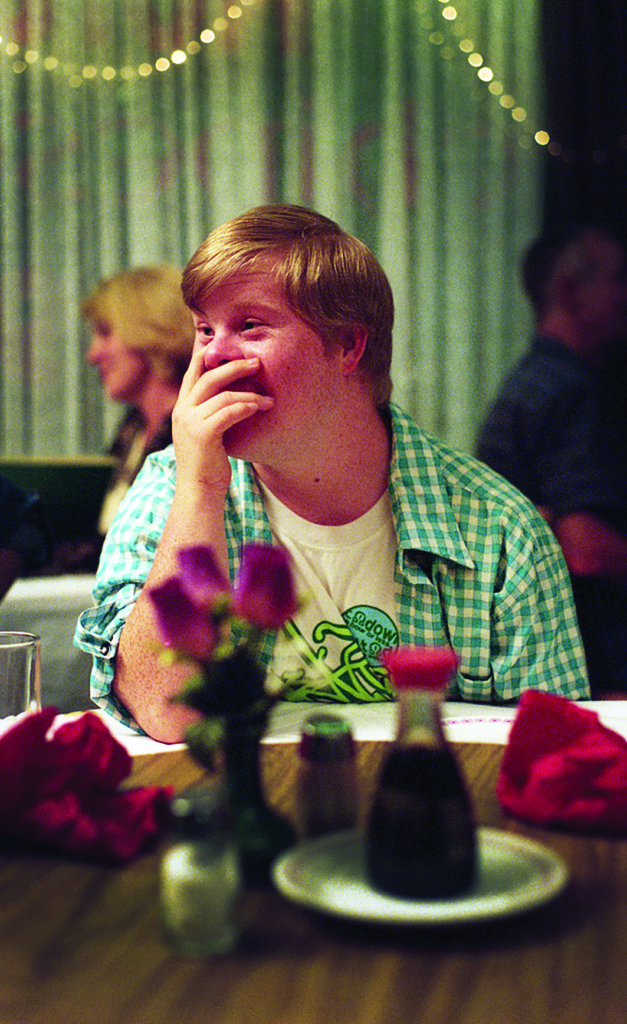
Bassendream’s exploration of suburbia relies on its crisscrossing narrative, but equally on the accumulation of small, standalone moments that have little to no association with this narrative. There’s the group of elderly tai chi enthusiasts whose movements are observed with an anthropological inquisitiveness; a backyard show by The Pop Tarts, a grotesquely adorable Spice Girls cover band; the proud smirk on a man’s face at a suburban Chinese restaurant as his sizzling hotplate arrives at the table (a scene I feel like I’ve witnessed every time I’ve eaten at one myself); and the boy seen by another boy through a gap in a fence, putting on a cross-dressing performance in the backyard for nobody but himself. The film’s fragments always remain as important and as visible as the glue that holds them together – indeed, many require no glue at all, because they’re complete in and of themselves.
Accordingly, the most lasting impressions are often left by bit players whom we scarcely see, let alone get to know. In one hilarious episode, a posh woman uses a payphone to call for help after her BMW conks out on the outskirts of the suburb. Holding the receiver as if it were covered in dog shit, she’s getting more flustered by the second when a shirtless man covered in tattoos – probably the exact type of person she’d be most terrified of bumping into – sneaks up on her out of the blue, barks in her ear, then disappears just as quickly. It would be a memorable enough cameo on its own, but the film drops in on this man twice more: once just before this scene, when he’s shown pissing against a brick wall; and then again a little while later, when the camera tracks alongside him as he races down the street on his bike, free as a bird. Despite being completely superfluous from a narrative standpoint, the personality of this unnamed weirdo is felt so clearly in these three glimpses that he registers as a character in his own right. The film affords him the same emphasis – and, in its own peculiar way, the same respect – as everybody else.
In its refusal to make clear distinctions between major and minor characters, and between moments big and small, Bassendream presents a decidedly inclusive and communal way of looking that is in keeping with how the film was made. All micro-budget productions rely on favours to a huge degree, and this one was no different. The filmmakers called upon their home-town connections wherever they could – ‘I felt like I had the whole town of Bassendean,’ Barretto suggests[13]Barretto, quoted in Eeles, op. cit. – and help was received in the form of access to locations, the loaning of cars to assist with the period setting and residents offering their toilets for use during exterior shoots.[14]See Eeles, ibid.; and Troy Mutton, ‘Meet the Maker of Bassendream, a New Movie Set in the ’90s About Life in Suburban Perth’, Perth Is Ok!, 23 June 2022, <https://perthisok.com/news/bassendream-perth-revelation-film-festival/>, accessed 25 October 2022. The screenplay was also assembled in the manner of a communal bricolage, with its narrative fragments having been inspired by a variety of sources from across the community. These include the experiences of not only Barretto but also his family and friends (several of whom appear in the film), as well as other residents who contributed their memories via a Facebook group set up several years before filming began.
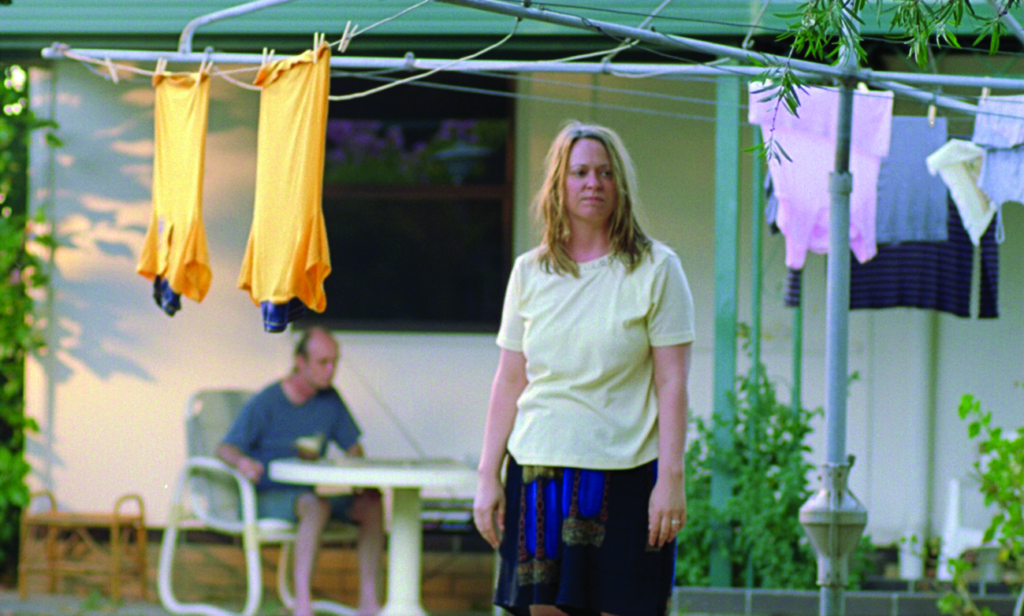
Though it’s becoming increasingly common for films to look back at the 1990s,[15]From the vivid portrayal of childhood in mid90s (Jonah Hill, 2018) to the pop-culture worship of Captain Marvel (Anna Boden & Ryan Fleck, 2019), it appears that enough time has now passed for filmmakers to consider the decade a distinct historical period. ‘We are now so far removed from the 20th century that the ’90s Period Piece is a genre unto itself,’ writes Zach Schonfeld in his article on the subject. Schonfeld, ‘Are We Living in a Golden Age of ’90s Period Films?’, Esquire, 29 March 2019, <https://www.esquire.com/entertainment/movies/a26963608/90s-period-films/>, accessed 5 September 2022. it remains relatively rare for films with shoestring budgets to try to depict any past era that is recognisably so. This is simply because the past must somehow be re-created in order to be represented, and this process tends to be more expensive than filming what’s already there. It’s fortunate for Bassendream that Bassendean and the decade in which the film is set were a ready-made pairing, given how relatively little has changed in the suburb in the years since. As far as the film’s exterior locations are concerned, the strategy appears to have been to leave things out rather than put things in. The film does a more than sufficient job of suggesting its era – in fact, much of it could easily suggest an earlier one – through Barretto and his crew’s process of cherrypicking some suitable spots around the suburb, ensuring that nothing too new crept into the shot, and scattering some old cars in here and there.
This isn’t to say that Bassendream relies on existing locations alone for its period setting. As the film takes pleasure in showing, this was a time when a framed America’s Cup poster would proudly adorn a living-room wall, kids would get ‘scunted’ if they were in trouble, and every boy in the country seemed to own a wardrobe consisting exclusively of Bad Boy caps and Rusty singlets. The art direction, which likely involved plundering most of the op shops in Perth, is a skilful work of bricolage in itself. With its mixture of obsolete artefacts (a Microsoft Encarta CD-ROM), pop-culture icons (a ‘Stussy S’ drawn on a spud cannon) and enduring products that seem to never go away (the Guess Who? board game), the film’s decor is simple and to the point; yet it also evokes a sense of continuity that feels entirely appropriate to the old-but-timeless qualities of a suburb like Bassendean.[16]The production team was similarly resourceful with its locations. For example, a short-term rental property served as a production hub and an office, as well as the filming location for ten separate characters. See Peirce, op. cit.; and Kornits, op. cit. While there are moments when the film hovers too close to nostalgia worship (the use of a WA Salvage commercial as an intermission being one such example[17]WA Salvage was a long-running discount-warehouse chain in Perth that was liquidated in 2005. Its TV commercials featured an exuberant Italian mascot, Luigi Savadamoni (played by Claudio Versaico), shouting the iconic catchphrase: ‘We’re not fancy, but we’re cheap!’ See, for instance, ‘WA Salvage (Old Australian Commercial)’, YouTube, 13 July 2013, <https://www.youtube.com/watch?v=3ekXRl-bTfE>, accessed 25 October 2022.), Bassendream’s evocation of time and place, as a whole, is wholly convincing.
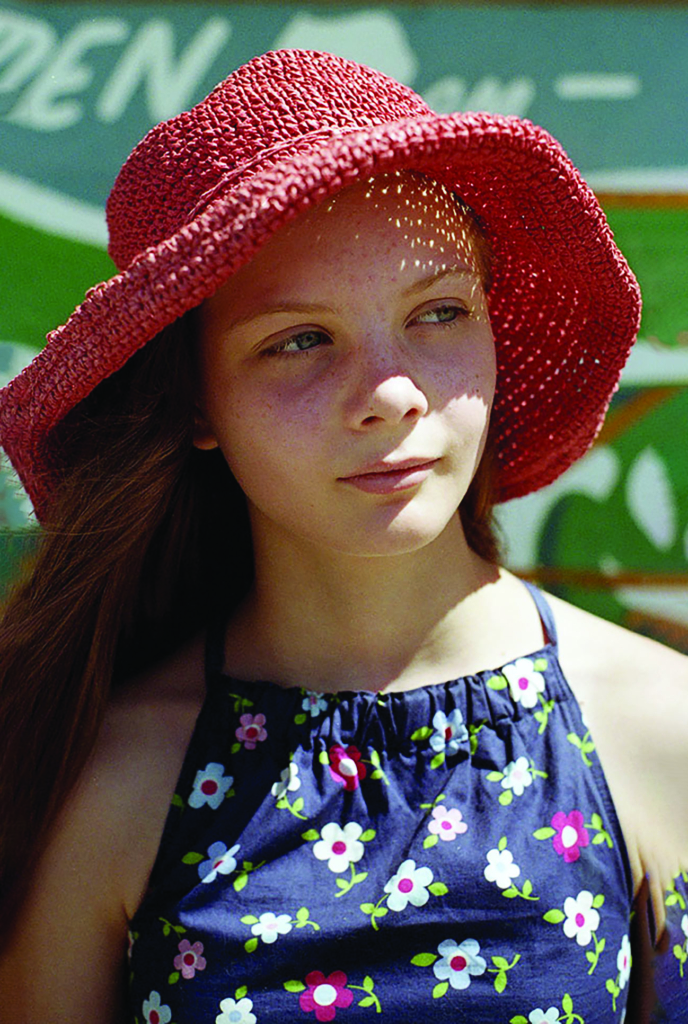
Another key factor here is the use of 16mm film – a format that seemed destined for extinction just a few years ago, having served as the default option for independent and low-budget filmmakers for much of cinema’s history. Though 16mm has enjoyed a modest revival in recent years (in line with other analog formats),[18]The 2022 Cannes Film Festival program featured twenty-six productions shot on film, half of which were shot wholly or partially on 16mm. ‘Cannes 2022 Selection Features 26 New Productions Shot on KODAK Film’, Kodak website, 17 May 2022, <https://www.kodak.com/en/company/press-release/cannes-2022-shot-on-film>, accessed 5 September 2022. there’s been little incentive for most filmmakers to turn back the clock,[19]The price of film stock and processing can be prohibitive, and the general lack of celluloid infrastructure makes it a rather impractical option regardless of the cost. For filmmakers accustomed to the convenience and immediacy of digital workflows, the risks may not be worth it. and the notion of a micro-budget feature shot on any type of celluloid sounds like an oxymoron today. Barretto’s choice of 16mm has proven to be an inspired one, however – an investment, of sorts, that has provided benefits both aesthetic and practical. On one level, 16mm acts as an extension of the film’s decor: it becomes an efficient shorthand for a bygone era by virtue of its grainy indistinctness. Meanwhile, its textures also help absorb some of the film’s budgetary limitations. The format is much more forgiving, for example, to those shots where the camera is pointed at exterior locations bathed in harsh summer light (which can look drab in films at the best of times).
Whether it’s a state-of-the-art camera or the hottest new codec, digital filmmaking technology tends to have an incredibly short life span and is quickly rendered obsolete by whatever comes next. An outdated format 16mm may be, but it’s also a stable and consistent one: its longevity spans decades rather than years, and it thus holds an advantage of not being associated with any particular period. This comes into play when you consider how long it took for Bassendream to be completed. The idea for the film was conceived back in 2009; a precursory 16mm short was made in 2013;[20]The film in question is Before the Dream (2013), which is also set in Bassendean and features some of the same actors and locations. Though it served as a sort of test run for the feature, the twelve-minute short is itself a non-narrative experimental film, and evokes an ominous atmosphere that is completely at odds with Bassendream. the feature’s shoot was spread over two separate summers in 2016 and 2017, during which Barretto was based in Sydney; and it wasn’t until July 2022 that the finished work finally premiered at the Revelation Perth International Film Festival, where it enjoyed several sellout screenings. Given this piecemeal process, it’s easy to imagine a film like Bassendream looking aged from the outset had Barretto taken the conventional digital route. But he didn’t, and the film looks the same today as it would have looked a decade ago – or several decades ago, for that matter.
Many of Bassendream’s characteristics – its fragmented structure, contained setting, simple scene coverage, predominantly static shots – can be seen as creative manifestations of shooting on a format in which every second counts.
Finally, shooting on celluloid would have imposed some useful limitations on a film that could have kept adding to itself till the cows came home. While 16mm may have been the more affordable alternative to 35mm in the past, it has never been particularly cheap, and certainly isn’t now; low-budget filmmakers have always had to plan and design their work around the costs involved, and the same is true today. Indeed, many of Bassendream’s characteristics – its fragmented structure, contained setting, simple scene coverage, predominantly static shots – can be seen as creative manifestations of shooting on a format in which every second counts. (‘It’s a dollar a second, mate’, Barretto has recounted joking to the kids before a take. ‘You can’t fuck this up.’[21]Barretto, quoted in Eeles, op. cit.) And it is these same characteristics that align the film closely with the spirit of the low-budget, independent filmmaking that flourished during the 1990s,[22]Barretto has stated that he wanted to make a film ‘that felt like the way 90s independent movies were shot’. Tim Barretto, quoted in Peirce, op. cit. wherein 16mm wasn’t a choice but a necessity, and part and parcel of a film’s identity. Though it was hardly a necessity in Barretto’s case, his film nonetheless expresses its kinship with this cinema by having been made under a similar set of conditions (and restrictions). One of Bassendream’s most charming qualities is how it seems to know exactly what it is – and where it belongs.
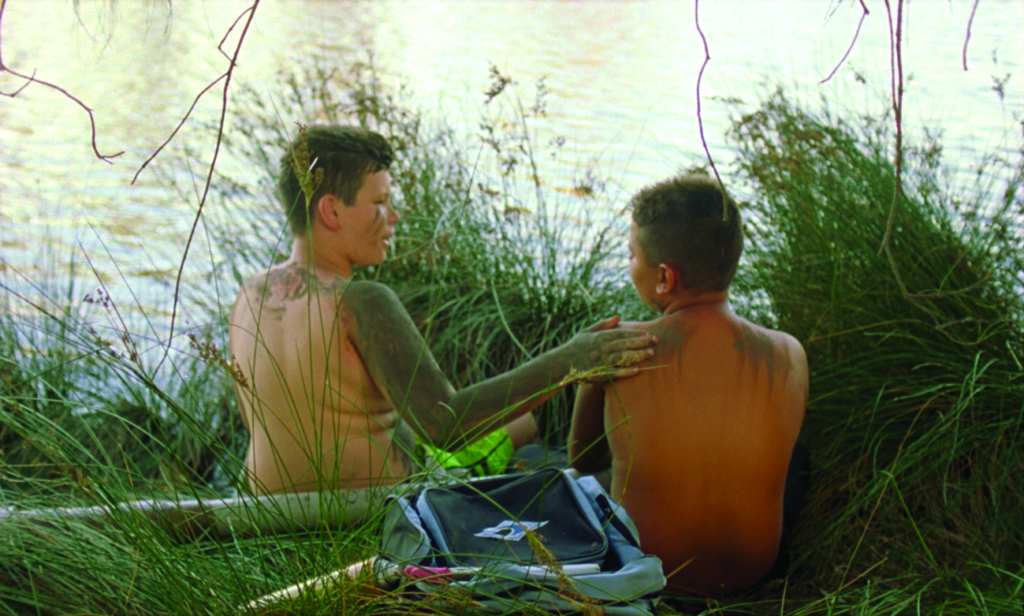
In an essay surveying the representation of suburbia in Australian cinema, critic Adrian Martin suggests that the suburbs tend to be ‘either fluffily romanticised or torn down in anger, pictured as the site of either social redemption or eternal damnation’.[23]Adrian Martin, ‘Better Send Some People Down: Suburbia in Australian Cinema (and Beyond)’, Film Critic: Adrian Martin, February 2000, <http://filmcritic.com.au/essays/suburbia_australian_cinema.html>, accessed 5 September 2022. Bassendream flirts with some of these poles, but ends up somewhere in between them. There’s more than a hint of romanticism in its depiction of childhood in suburbia, but this is counteracted by the discontented adults for whom the suburb is little more than the place in which they happen to live and pay the rent (not all of the kids’ lives are hunky-dory, either). There’s an obvious underlying affection for the suburb of Bassendean, but this is also kept in check, presumably because the film recognises it as a particular type of affection felt only by those who know a particular place. And while the film doesn’t shy away from some social ills, they’re mostly made palatable; it never points the finger at suburban life itself as some sort of contributing factor. All told, the suburbia of Bassendream is neither ugly nor beautiful, neither purgatory nor paradise – it just is. Nobody’s wanting to get into this place, but nobody’s trying to get out, either.
This neutrality (for want of a better word) is encapsulated by a motif that I haven’t yet mentioned, which is the film’s curious preoccupation with the ground. It is given unusual prominence from as early as the opening shot: as Matt walks up a grassy slope towards the football oval, the horizon is framed so high that that the top of the frame cuts off a tree midway and swallows up most of the building in the background. When the film isn’t searching for ways to include more of the ground in a shot, it’ll often just point the camera down at it directly – be it an unkempt yard, a weedy concrete clearing, silhouettes in a park or the patch of dead grass that Lauren crosses after saying goodbye to her best friend. Whether it’s a well-kept lawn or a shitty bit of kerbside, the film seems to be saying: this is all the same ground that everybody must walk on; make of it what you will.
I would like to thank Tim Barretto for clarifying some details about the film while I was preparing this article.
Endnotes
| 1 | David Whish-Wilson, Perth, University of New South Wales Press, Sydney, 2013, pp. 174–5. |
|---|---|
| 2 | The film was shot on location in Newcastle, but only because it was cheaper than shooting it in Sydney. As producer Leah Churchill-Brown suggests, ‘It could have been filmed anywhere – it could have been Wollongong, it could have been Adelaide.’ Churchill-Brown, quoted in Angela Cuming & Paul Scott, ‘Murder, Mayhem and a Movie with a Chillingly Familiar Plot’, The Sun-Herald, 2 October 2005, p. 35. |
| 3 | Bassendean is the name of both a suburb and a local government area (the Town of Bassendean, which encompasses the suburbs of Bassendean, Ashfield and Eden Hill). All of the filming took place within the boundaries of the latter, with the overwhelming majority taking place within the suburb itself. A comparable Australian film is Kriv Stenders’ Blacktown (2005) – also a self-funded micro-budget film, albeit shot digitally – which was set and filmed entirely in and around the Western Sydney suburb of the same name. |
| 4 | The nickname has been adopted by everything from the eponymous pub (The Bassendean Hotel, aka ‘The Basso’) to a local church (Bassendean Church of Christ, now officially known as Basso Church). |
| 5 | This reputation stems mainly from the various blue-collar industries that were once based in the area and Bassendean’s proximity to the (now-defunct) government railway workshops in the nearby suburb of Midland. See Carol Leigh, ‘Bassendean: A Rich and Varied Heritage’, Early Days: Journal of the Royal Western Australian Historical Society, vol. 13, part 3, January 2009, p. 341. For a broad historical overview of the suburb, including its significance for Whadjuk Noongar people, see Jennie Carter, ‘Bassendean: A Brief History’, Town of Bassendean, May 2020, available at <https://library.bassendean.wa.gov.au/Profiles/library/Assets/ClientData/Bassendean_brief_history_small_file.pdf>, accessed 5 September 2022. |
| 6 | Harris was the suburb’s golden child for many decades, but became a source of shame upon his conviction in 2014 on twelve counts of indecent assault against underage girls. See Brendan Foster, ‘Rolf Harris’s Home Town Removes All Signs of Former Favourite Son’, The Guardian, 4 July 2014, <https://www.theguardian.com/uk-news/2014/jul/03/rolf-harris-hometown-removes-signs>, accessed 25 October 2022. |
| 7 | The film’s press kit suggests that the narrative takes place on ‘the last day of the summer school holidays’, though this isn’t made explicit in the film itself. See Hope St Productions, Bassendream press kit, 2022, p. 3. |
| 8 | Dov Kornits, ‘Tim Barretto’s Perfection with Bassendream’, FilmInk, updated 12 October 2022, <https://www.filmink.com.au/tim-barrettos-perfection-with-bassendream/>, accessed 25 October 2022. |
| 9 | The generally upbeat vibe of the film is reflected by its soundtrack, which comprises Aussie rock numbers such as The Triffids’ ‘Save What You Can’, Paul Kelly and the Coloured Girls’ ‘Dumb Things’ and Jebediah’s ‘Leaving Home’. |
| 10 | ‘I really wanted to keep the kids and the parents in separate worlds’, Barretto explains. ‘I wanted the kids[’] world to have a heightened sense of reality and then the parents’ world based in reality.’ Tim Barretto, quoted in Matthew Eeles, ‘Interview: Tim Barretto’, Cinema Australia, 29 June 2022, <https://cinemaaustralia.com.au/2022/06/29/interview-tim-barretto/>, accessed 5 September 2022. |
| 11 | See Eeles, ibid.; and Andrew F Peirce, ‘Bassendream Director Tim Barretto Captured 90s WA Suburbia on Film and Talks at Length About Its World Debut at Revelation Film Festival in This Interview’, The Curb, 4 July 2022, <https://www.thecurb.com.au/bassendream-director-tim-barretto-captured-90s-wa-suburbia-on-film-and-talks-at-length-about-its-world-debut-at-revelation-film-festival-in-this-interview/>, accessed 5 September 2022. |
| 12 | The football is seen again towards the end of the film, wedged in a rooftop TV aerial; after it is dislodged and bounces down onto the street, another car is heard slamming on its brakes. |
| 13 | Barretto, quoted in Eeles, op. cit. |
| 14 | See Eeles, ibid.; and Troy Mutton, ‘Meet the Maker of Bassendream, a New Movie Set in the ’90s About Life in Suburban Perth’, Perth Is Ok!, 23 June 2022, <https://perthisok.com/news/bassendream-perth-revelation-film-festival/>, accessed 25 October 2022. |
| 15 | From the vivid portrayal of childhood in mid90s (Jonah Hill, 2018) to the pop-culture worship of Captain Marvel (Anna Boden & Ryan Fleck, 2019), it appears that enough time has now passed for filmmakers to consider the decade a distinct historical period. ‘We are now so far removed from the 20th century that the ’90s Period Piece is a genre unto itself,’ writes Zach Schonfeld in his article on the subject. Schonfeld, ‘Are We Living in a Golden Age of ’90s Period Films?’, Esquire, 29 March 2019, <https://www.esquire.com/entertainment/movies/a26963608/90s-period-films/>, accessed 5 September 2022. |
| 16 | The production team was similarly resourceful with its locations. For example, a short-term rental property served as a production hub and an office, as well as the filming location for ten separate characters. See Peirce, op. cit.; and Kornits, op. cit. |
| 17 | WA Salvage was a long-running discount-warehouse chain in Perth that was liquidated in 2005. Its TV commercials featured an exuberant Italian mascot, Luigi Savadamoni (played by Claudio Versaico), shouting the iconic catchphrase: ‘We’re not fancy, but we’re cheap!’ See, for instance, ‘WA Salvage (Old Australian Commercial)’, YouTube, 13 July 2013, <https://www.youtube.com/watch?v=3ekXRl-bTfE>, accessed 25 October 2022. |
| 18 | The 2022 Cannes Film Festival program featured twenty-six productions shot on film, half of which were shot wholly or partially on 16mm. ‘Cannes 2022 Selection Features 26 New Productions Shot on KODAK Film’, Kodak website, 17 May 2022, <https://www.kodak.com/en/company/press-release/cannes-2022-shot-on-film>, accessed 5 September 2022. |
| 19 | The price of film stock and processing can be prohibitive, and the general lack of celluloid infrastructure makes it a rather impractical option regardless of the cost. For filmmakers accustomed to the convenience and immediacy of digital workflows, the risks may not be worth it. |
| 20 | The film in question is Before the Dream (2013), which is also set in Bassendean and features some of the same actors and locations. Though it served as a sort of test run for the feature, the twelve-minute short is itself a non-narrative experimental film, and evokes an ominous atmosphere that is completely at odds with Bassendream. |
| 21 | Barretto, quoted in Eeles, op. cit. |
| 22 | Barretto has stated that he wanted to make a film ‘that felt like the way 90s independent movies were shot’. Tim Barretto, quoted in Peirce, op. cit. |
| 23 | Adrian Martin, ‘Better Send Some People Down: Suburbia in Australian Cinema (and Beyond)’, Film Critic: Adrian Martin, February 2000, <http://filmcritic.com.au/essays/suburbia_australian_cinema.html>, accessed 5 September 2022. |
